Abstract
1. The variation in visual efficiency of light with varying pupillary entry (the Stiles-Crawford effect) was measured to determine the proportion of light incident on the cones that escapes them without recovery by other cones. 2. The variation in detectability of interference fringes with varying pupillary entry of the interfering beams was measured to determine the proportion of incident light that was recaptured by cones in the dark stripes after escaping cones in the bright stripes of the fringes. 3. By exclusion, these observations determine the variation, with varying pupillary entry, in the proportion of incident light that was captured and absorbed by the first cones it entered. 4. Some 70-90% of the light absorbed by the cones when it passes through the centre of the pupil, is entirely lost to the visual system if it passes instead through the margin of the (dilated) pupil. 5. Over half the light that cones absorb when the light enters the margin of the pupil is light that has previously passed through other cones. 6. If the spread of recaptured light is assumed to be Gaussian, its standard deviation is at most one minute of visual angle. 7. Such recaptured light makes a previously unknown contribution to the various Stiles-Crawford effects.
Full text
PDF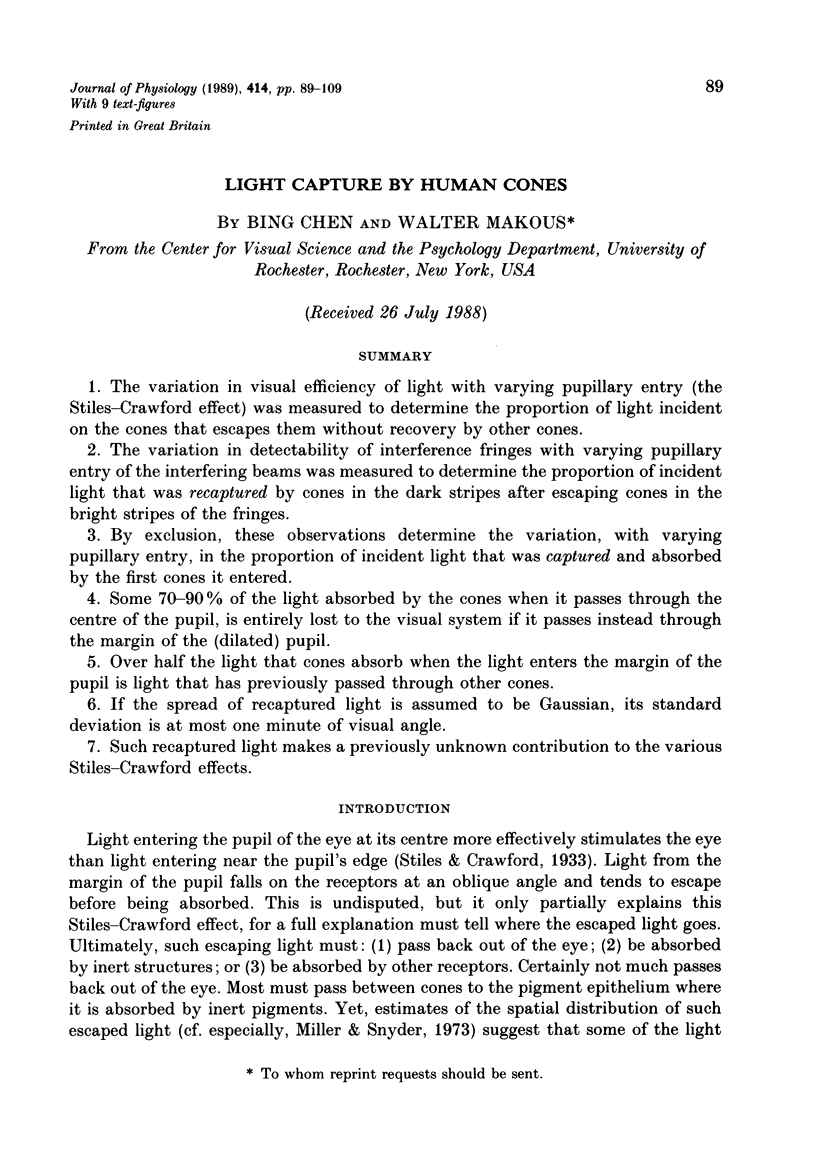
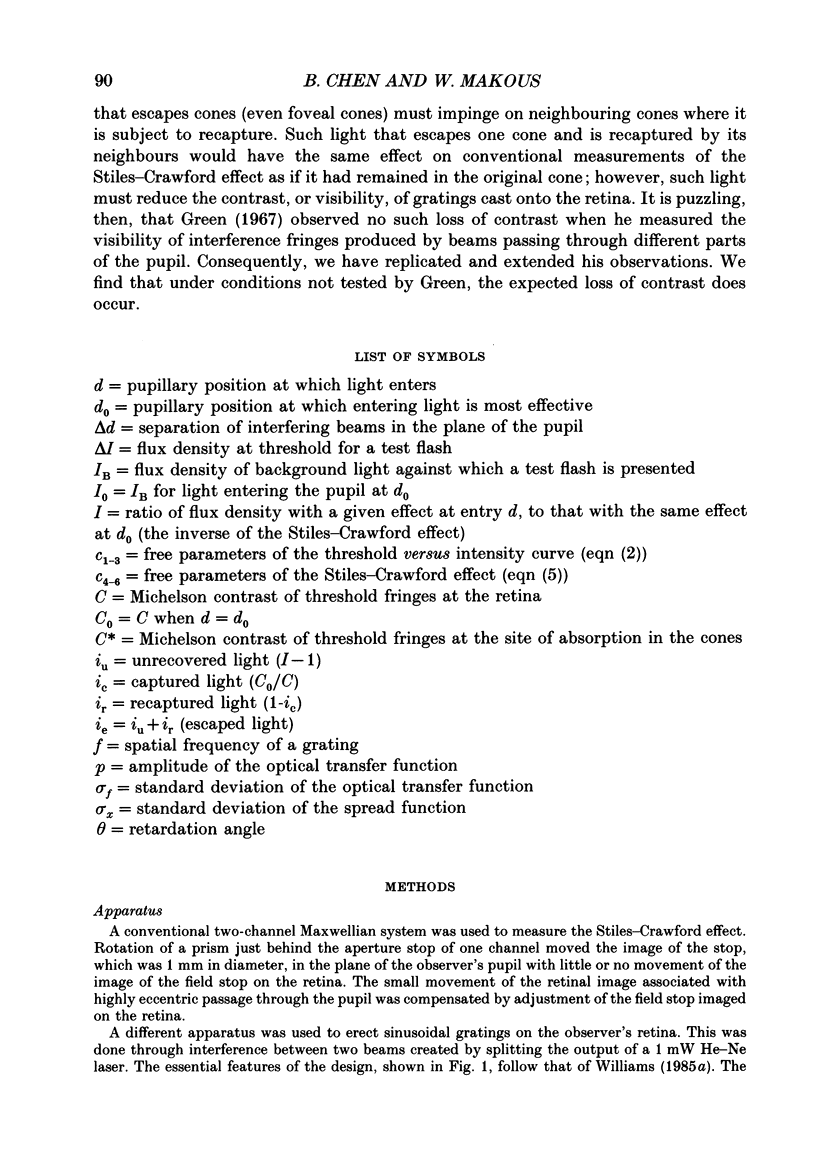
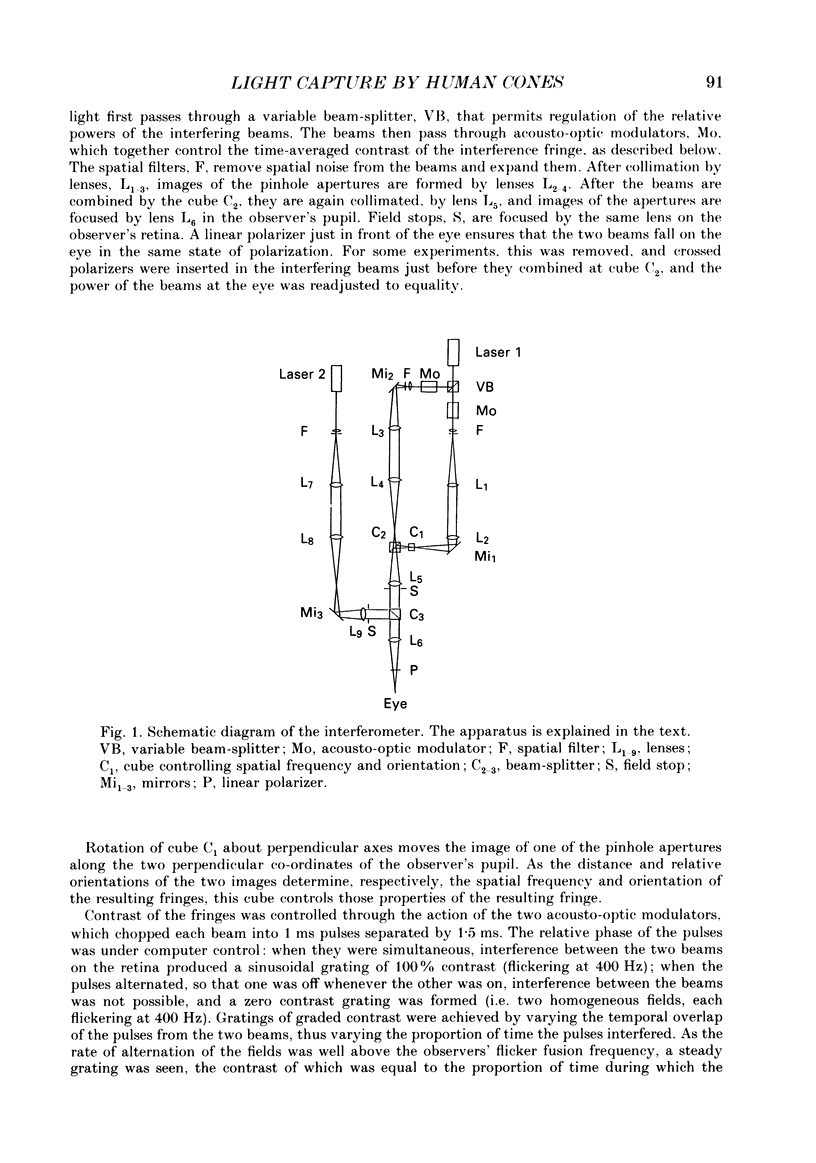
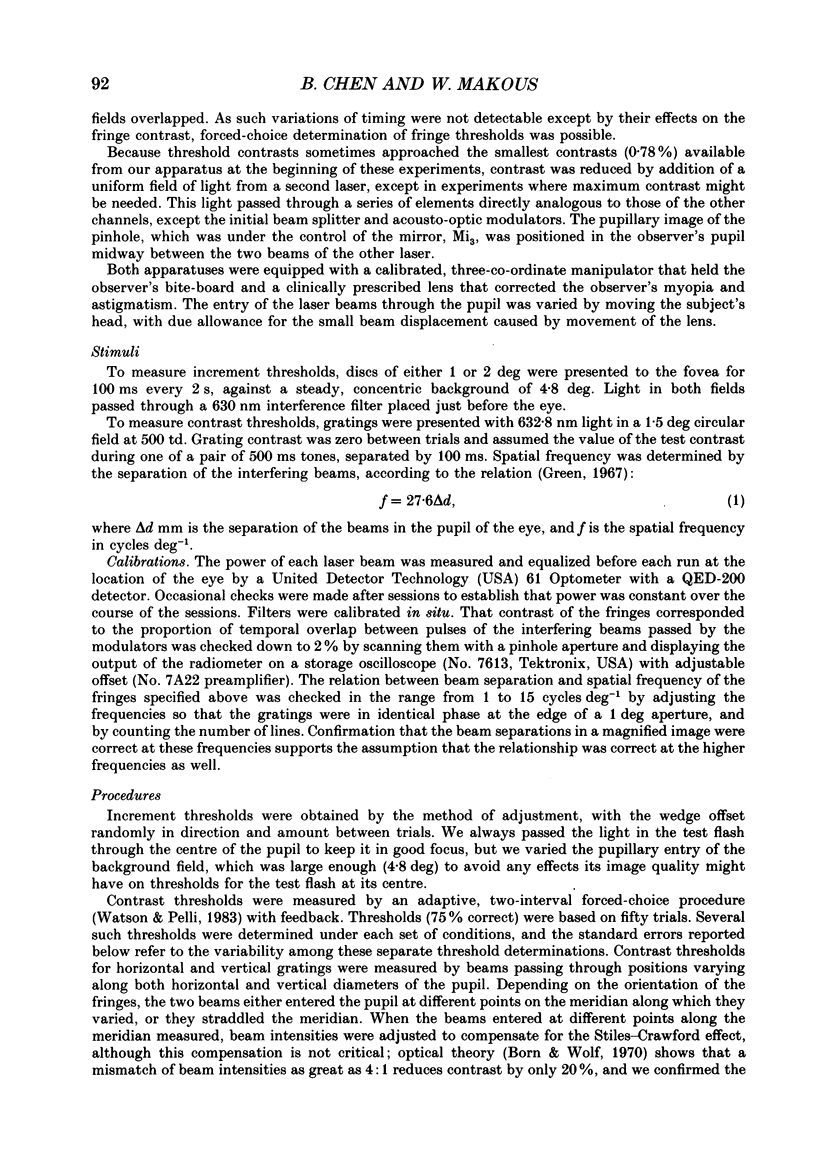
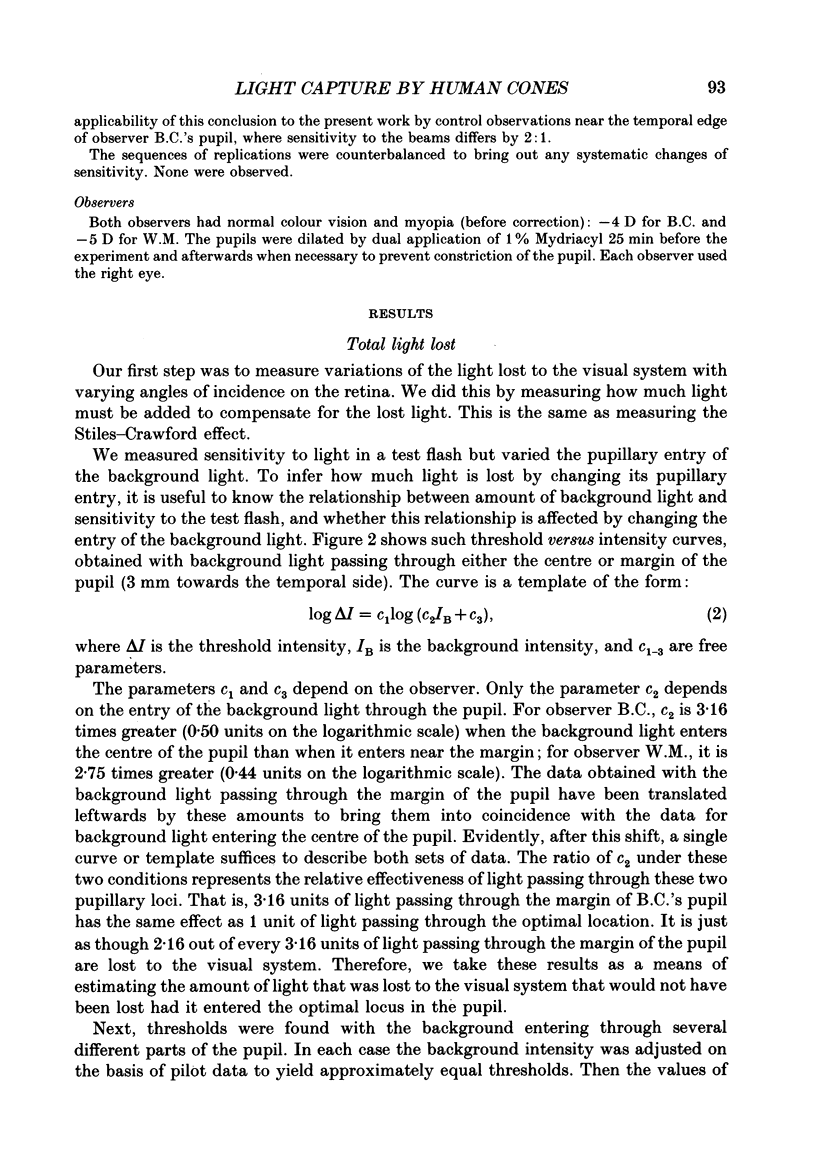
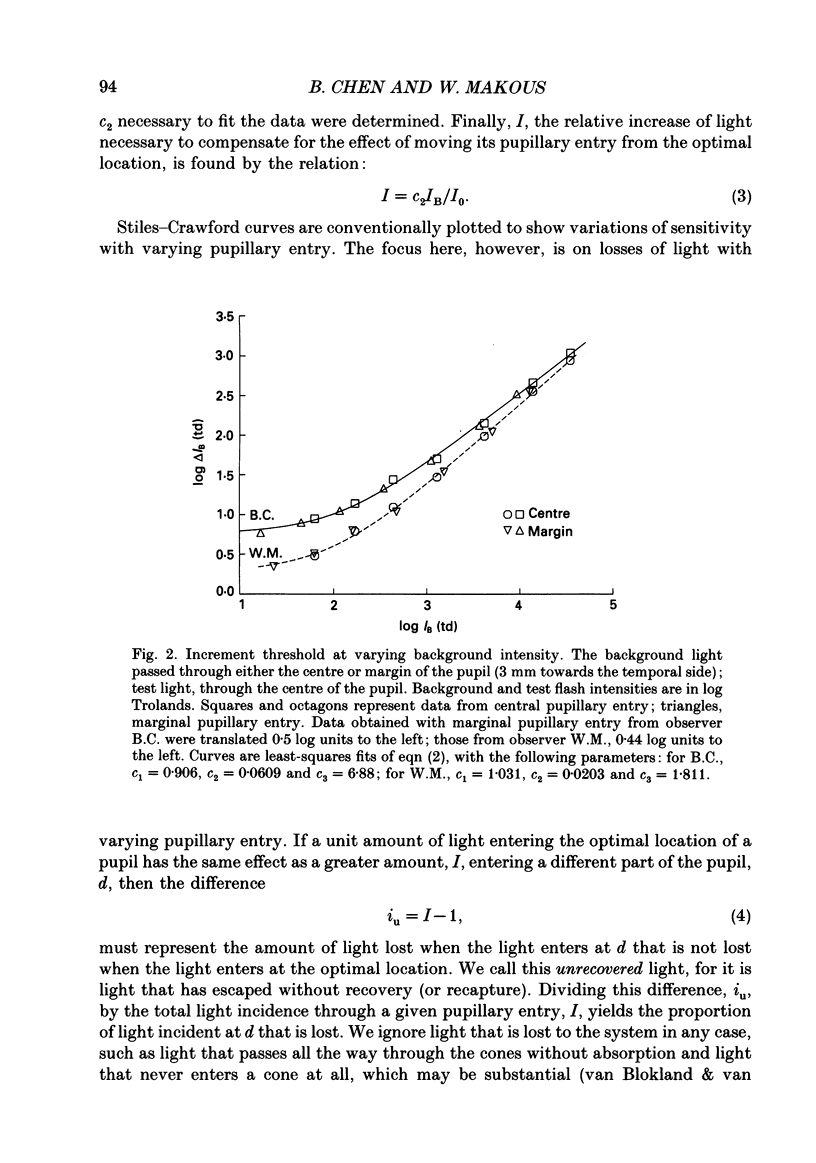
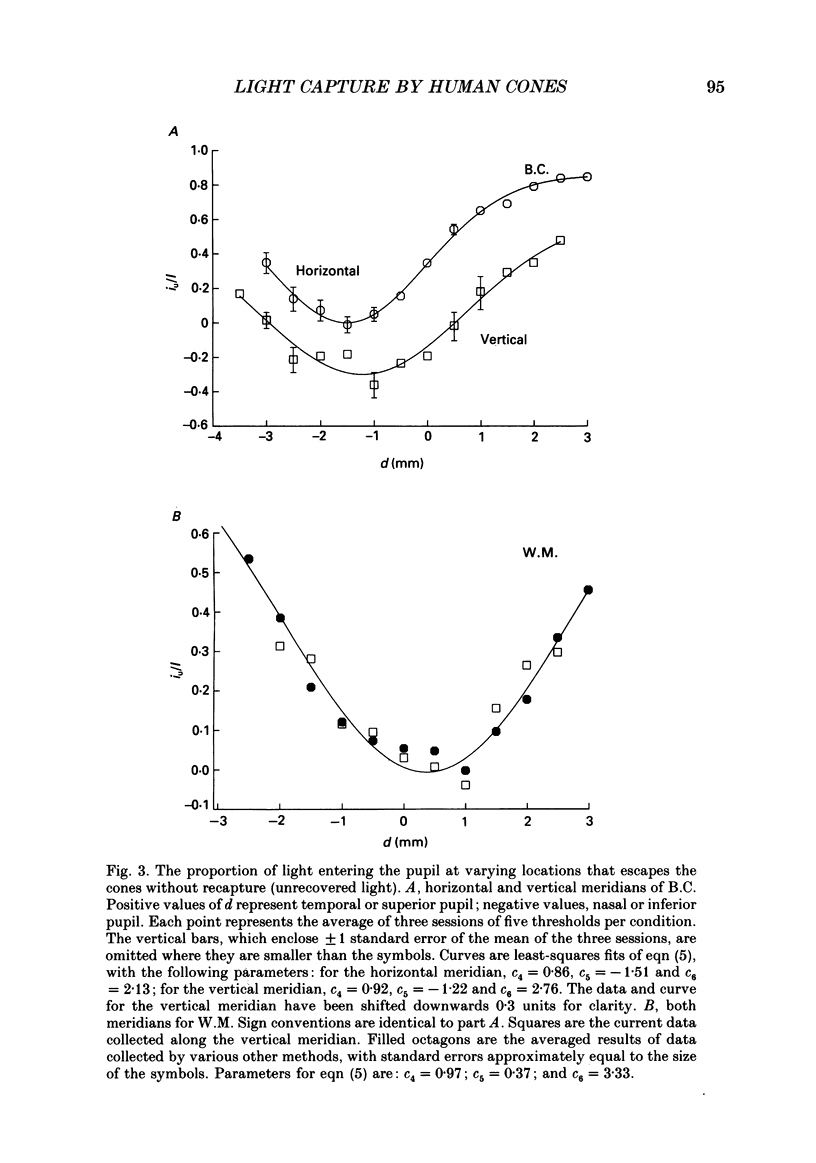
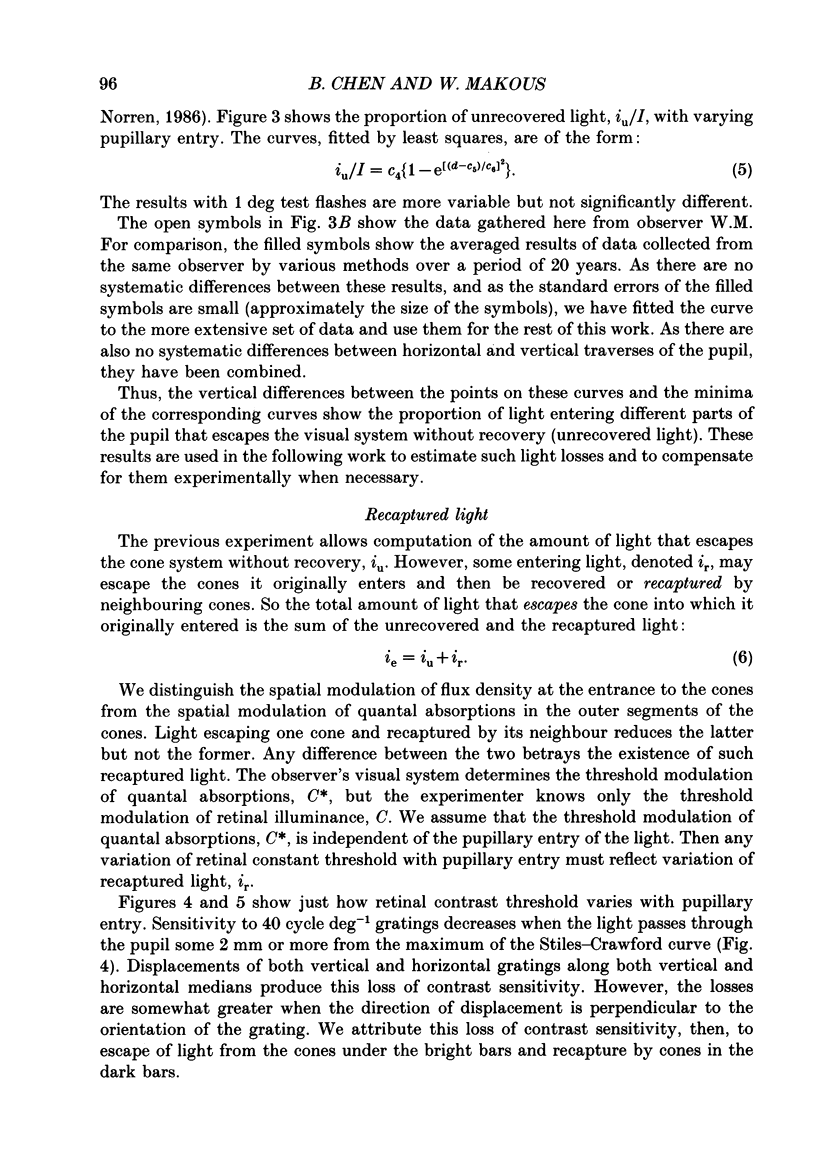
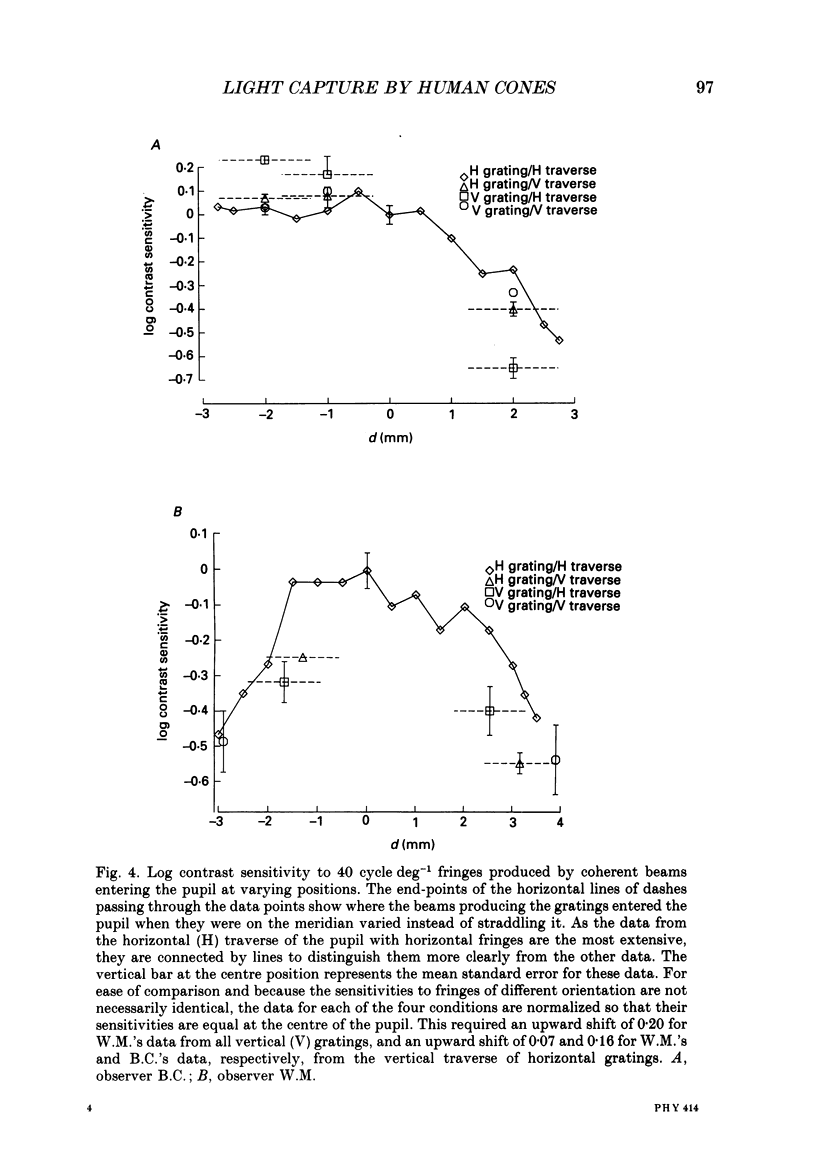
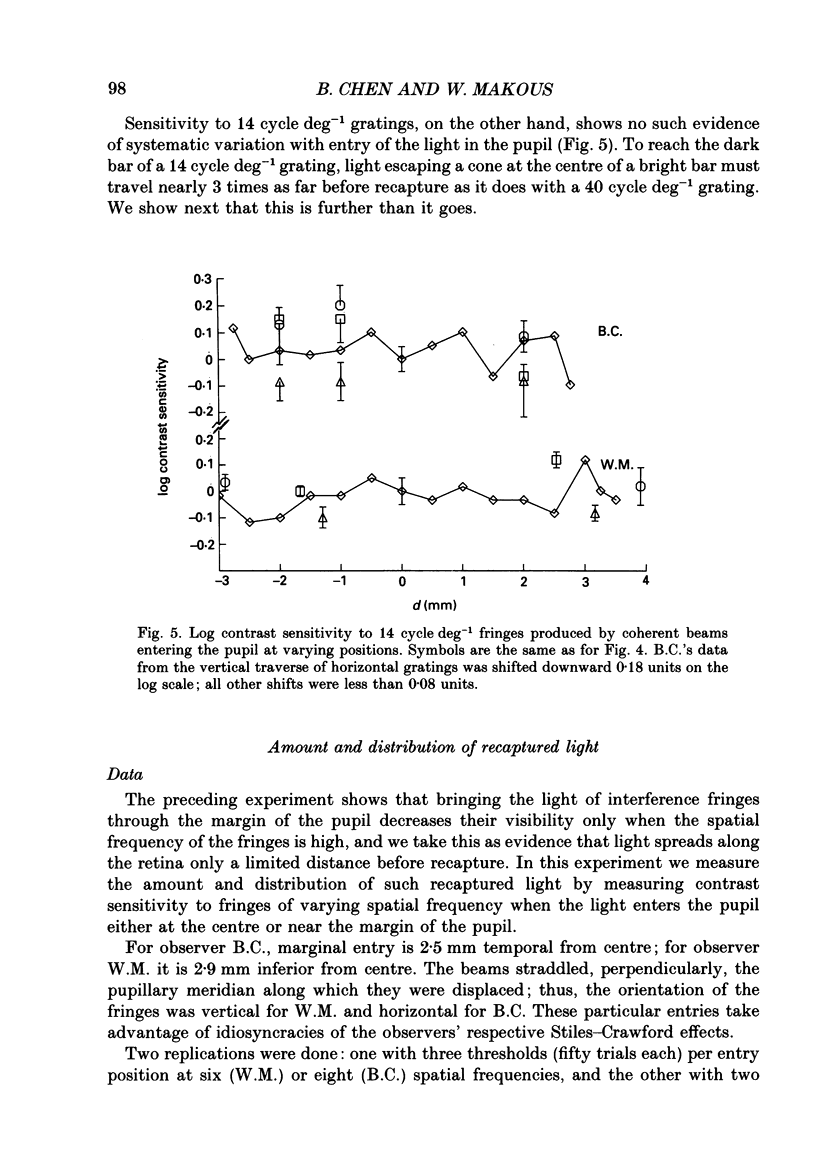
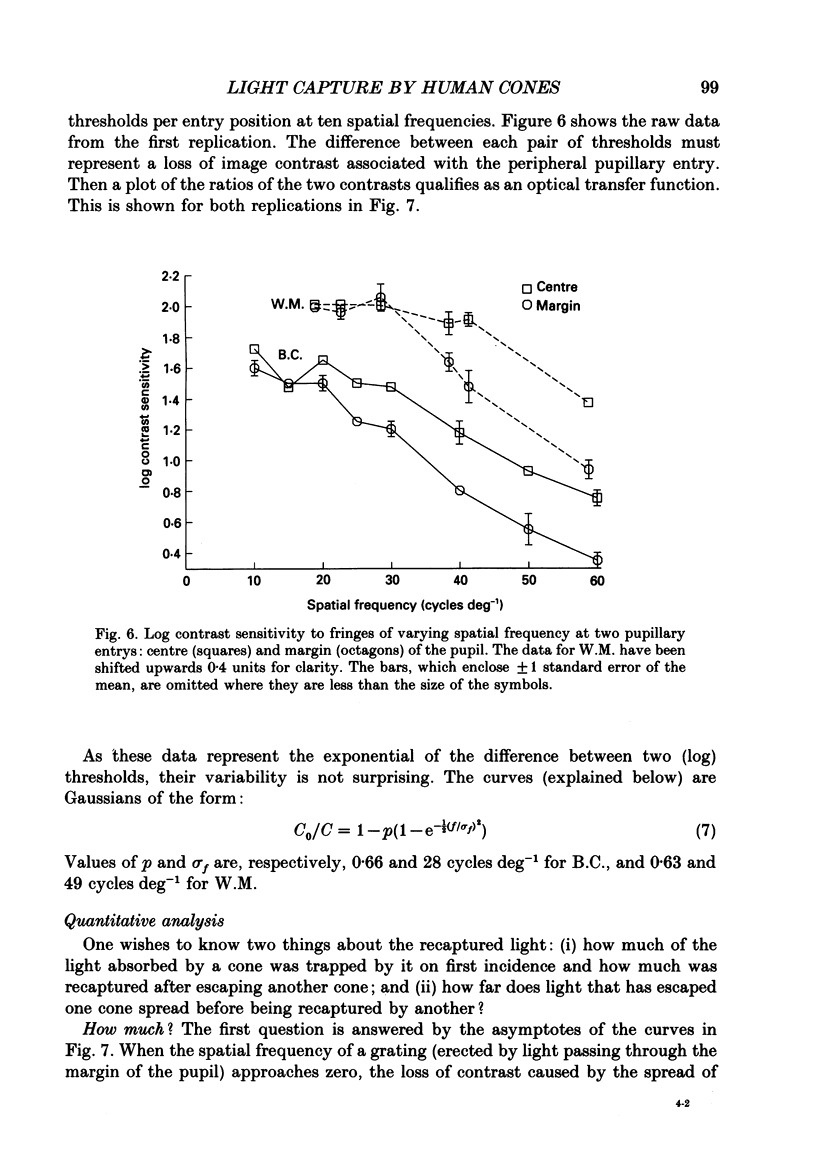
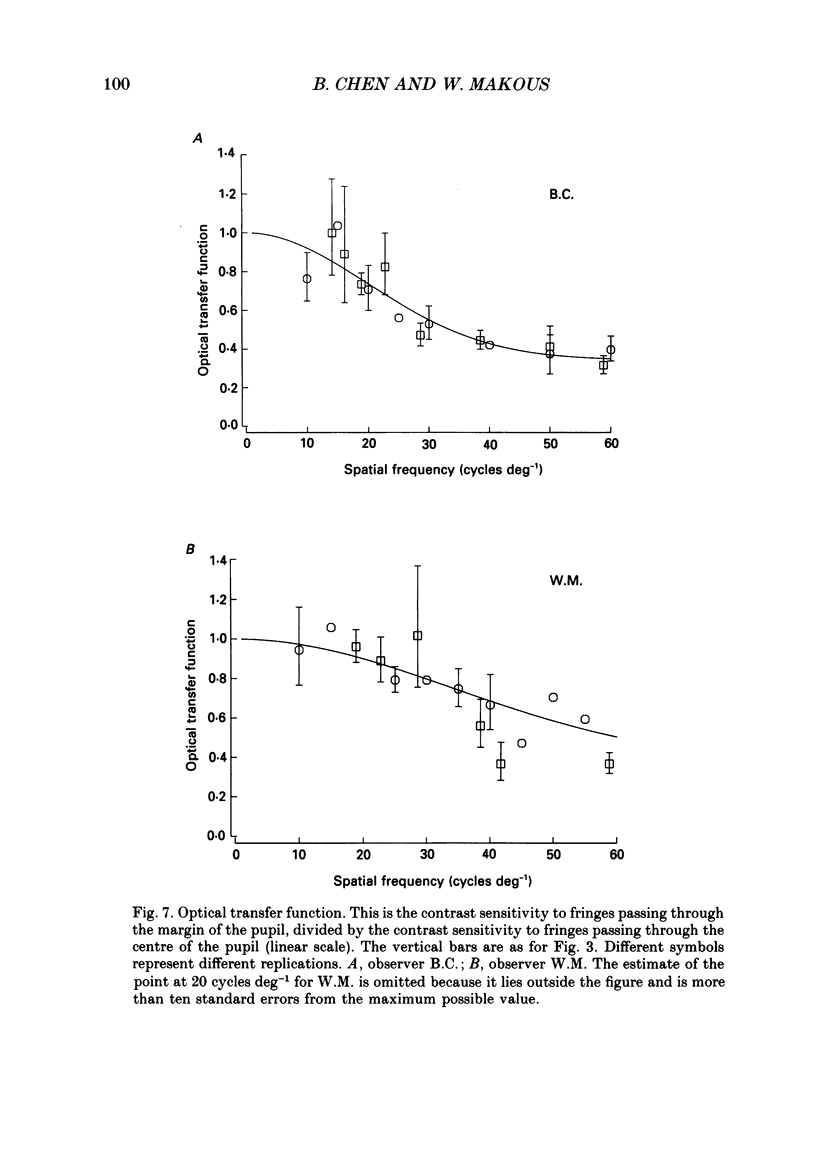
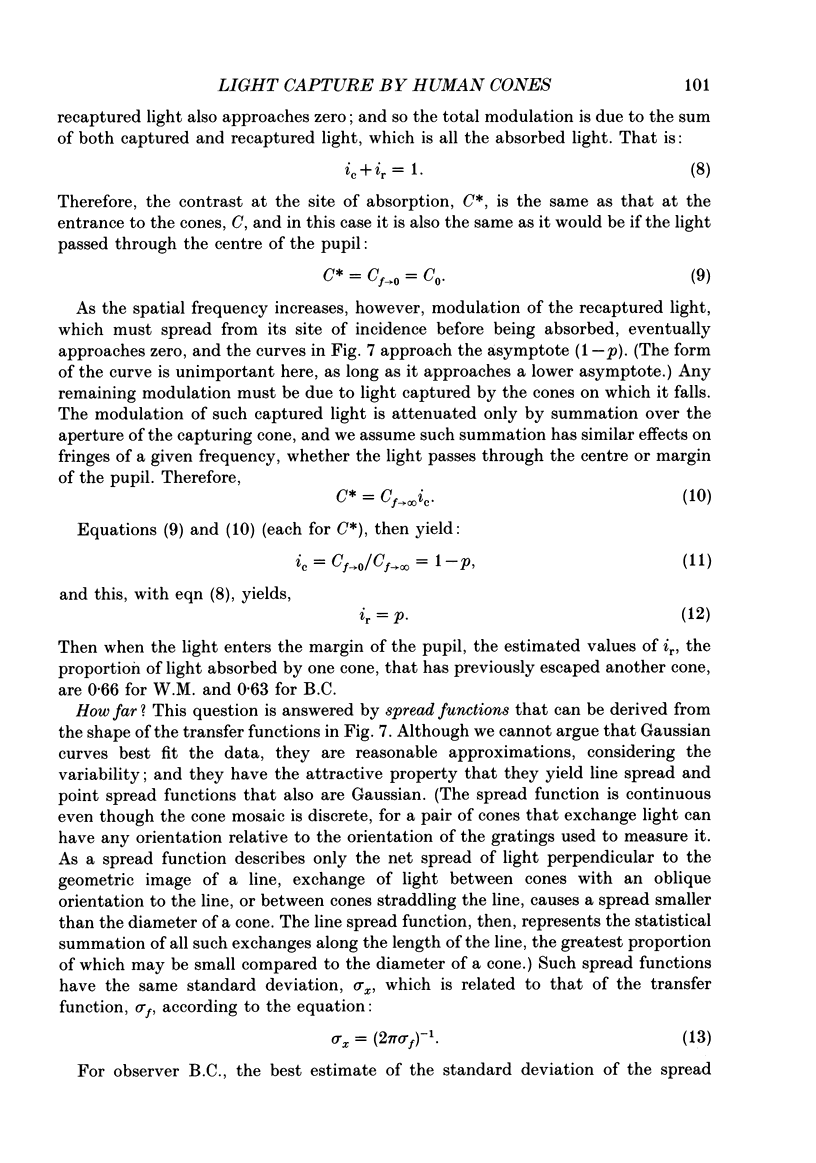
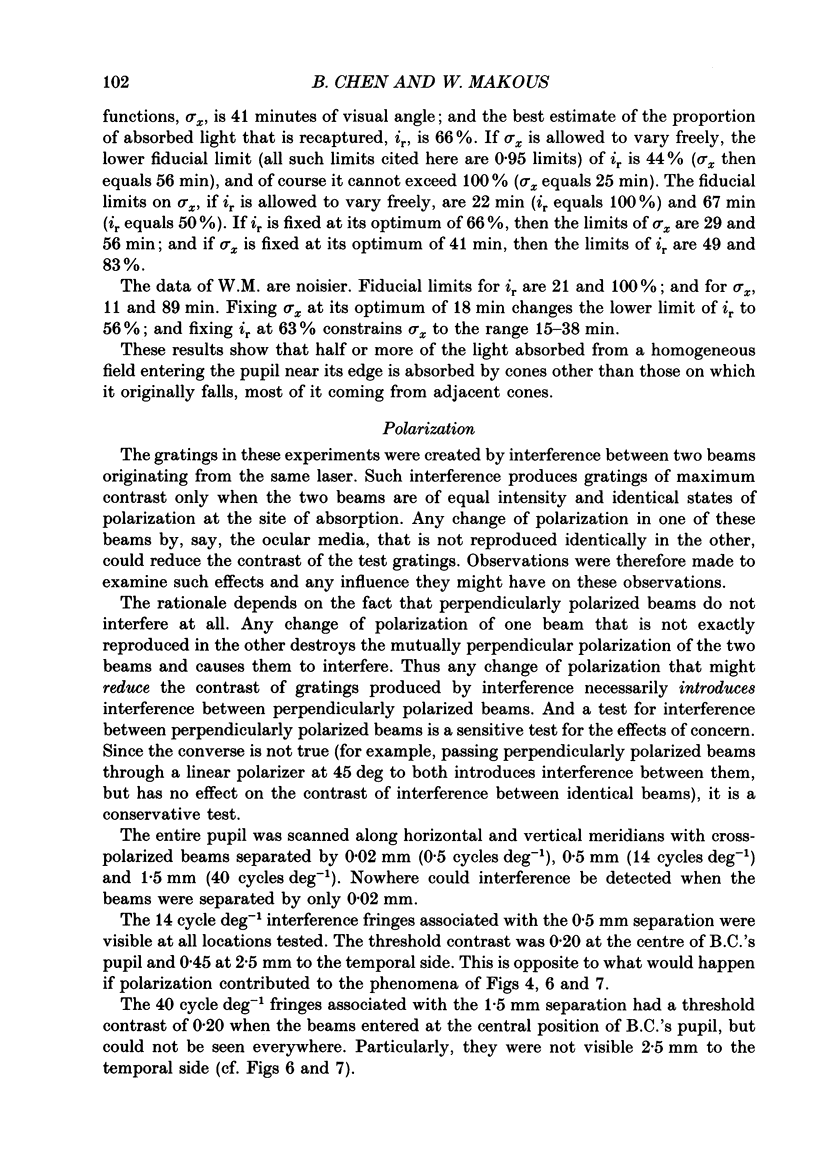
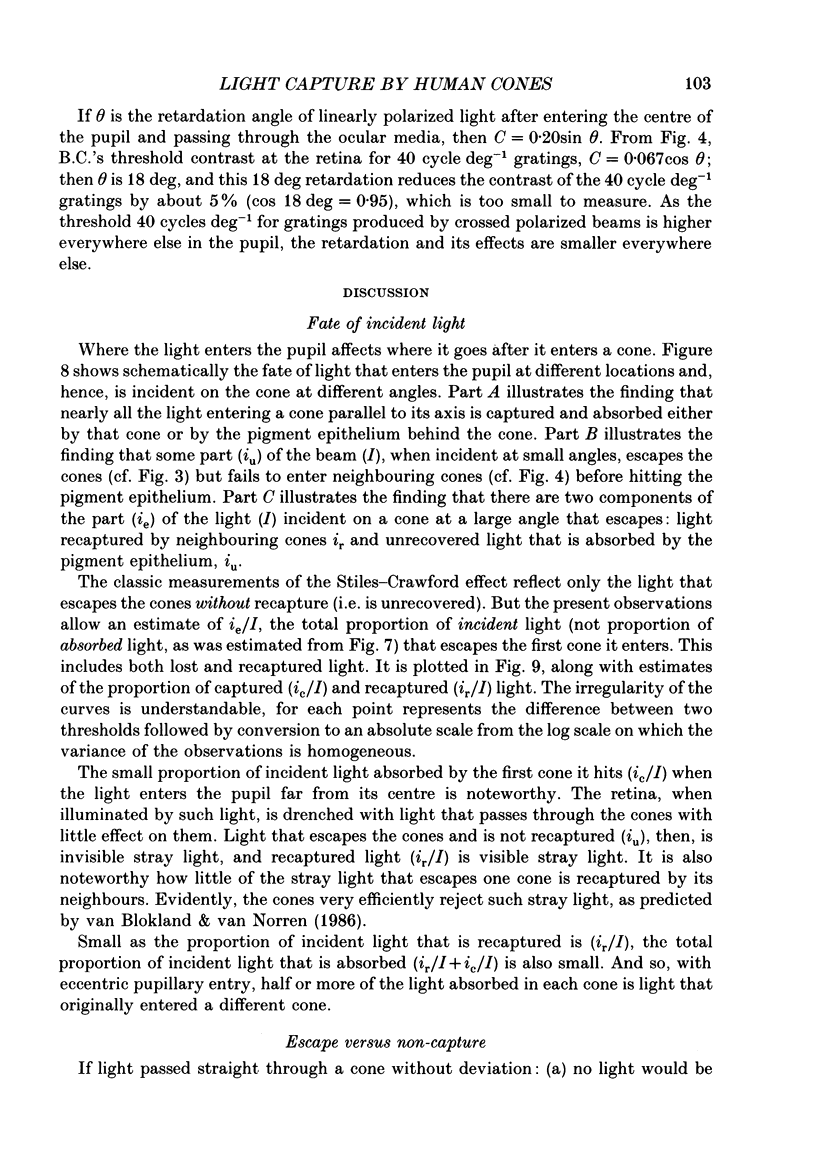
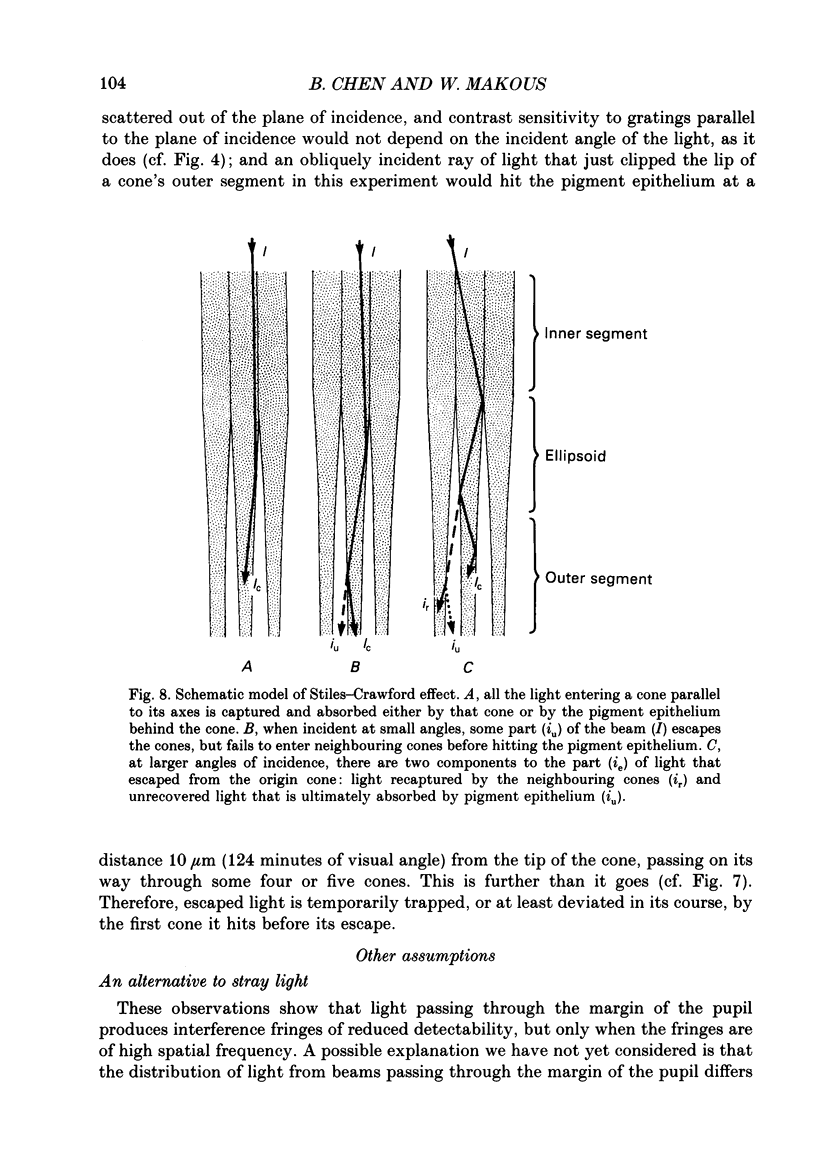
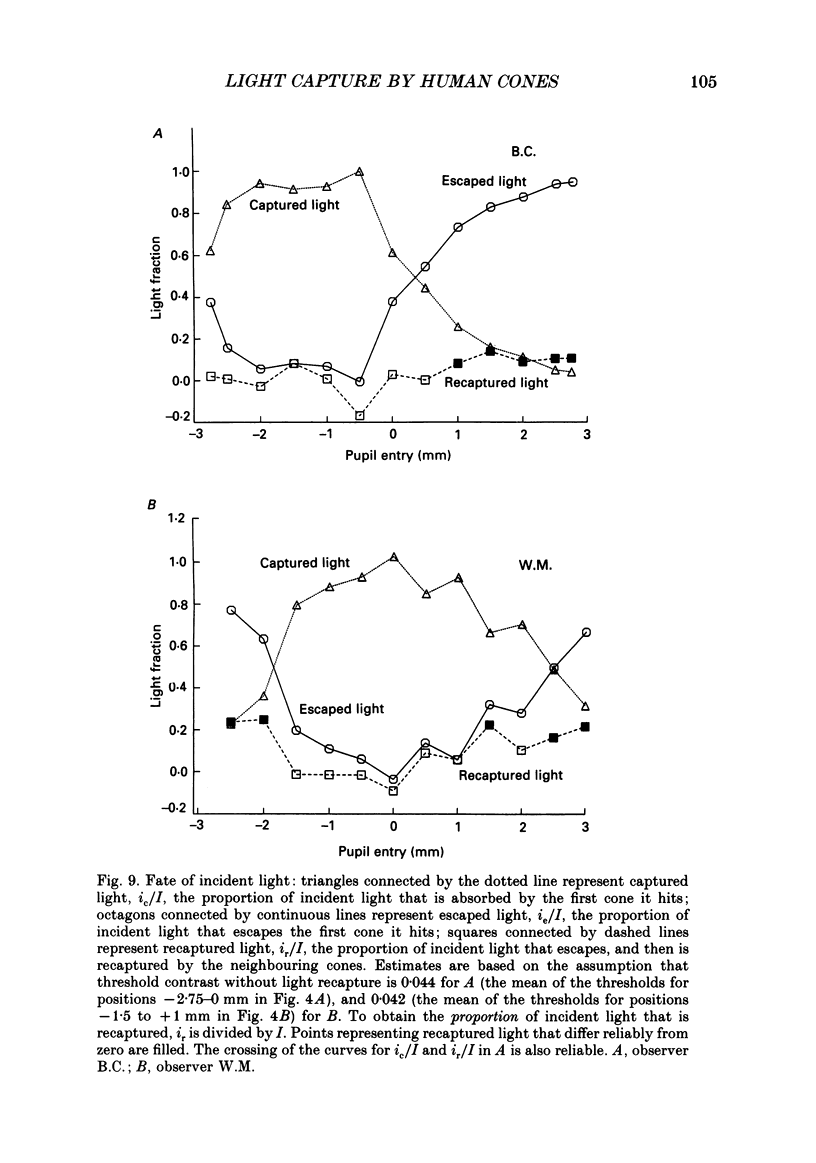
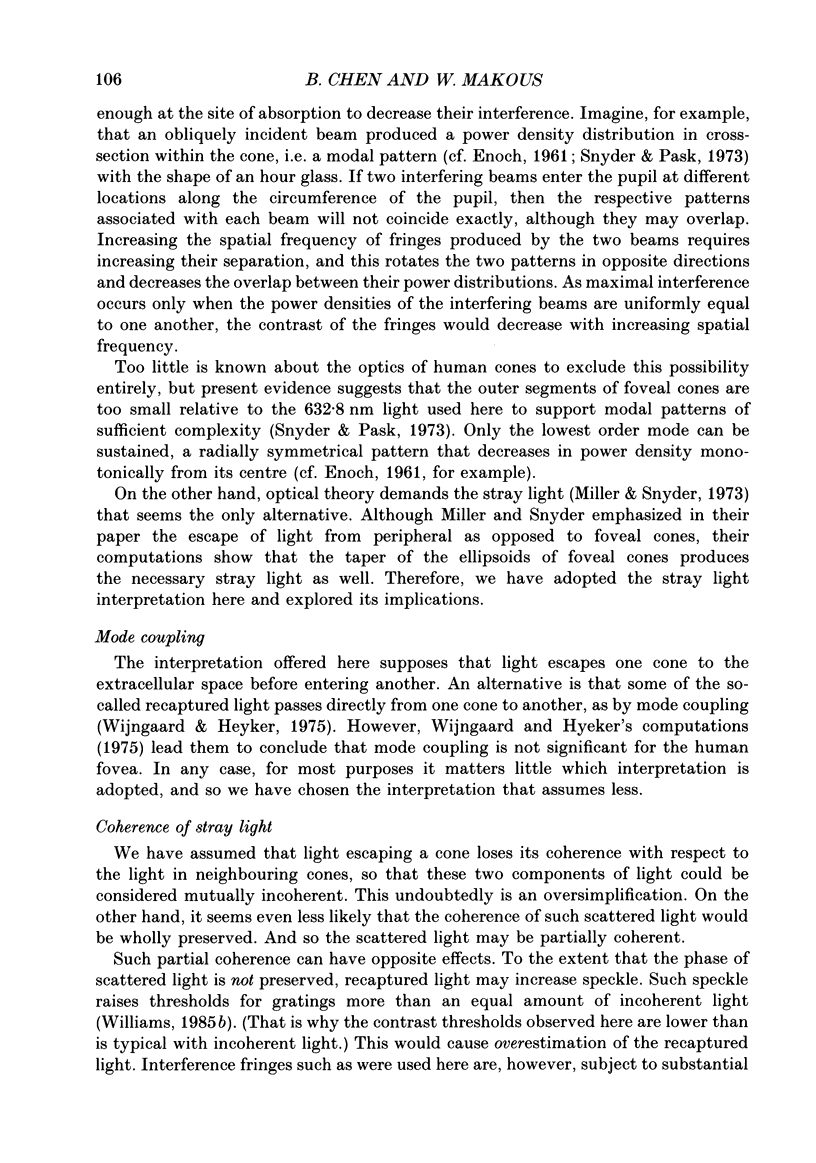
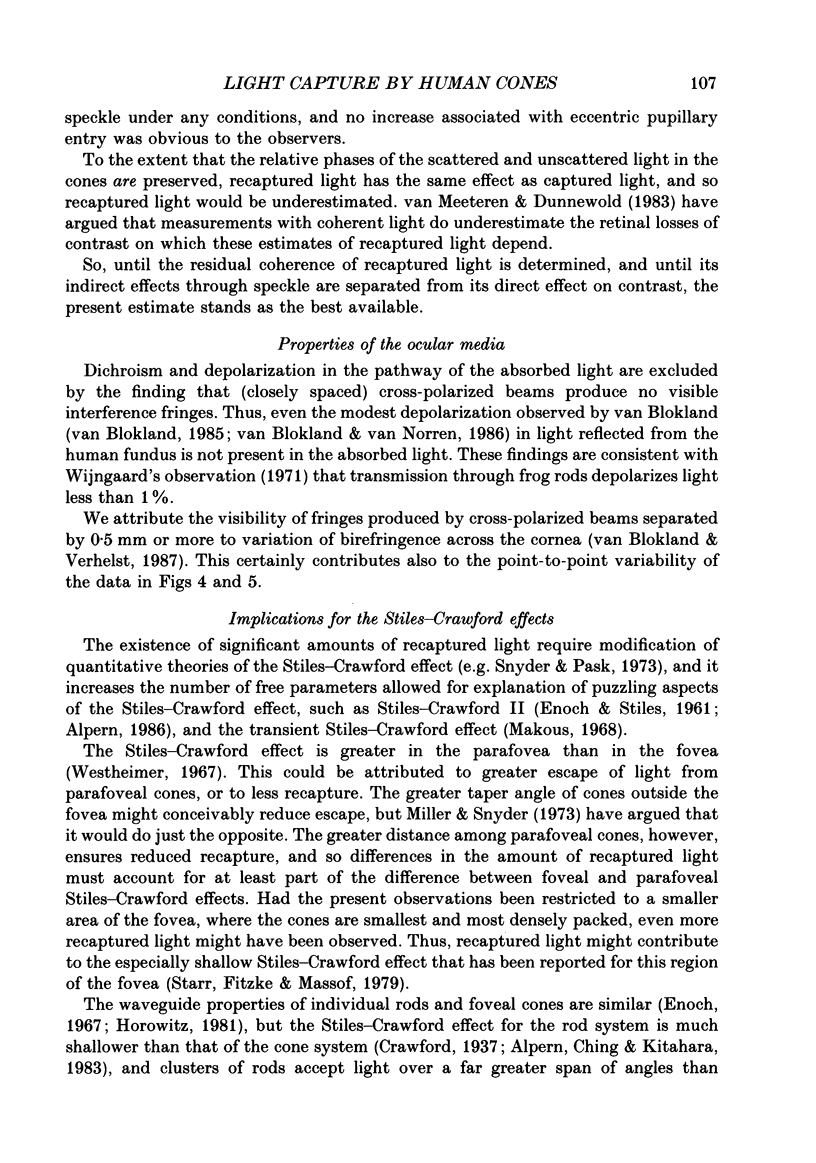
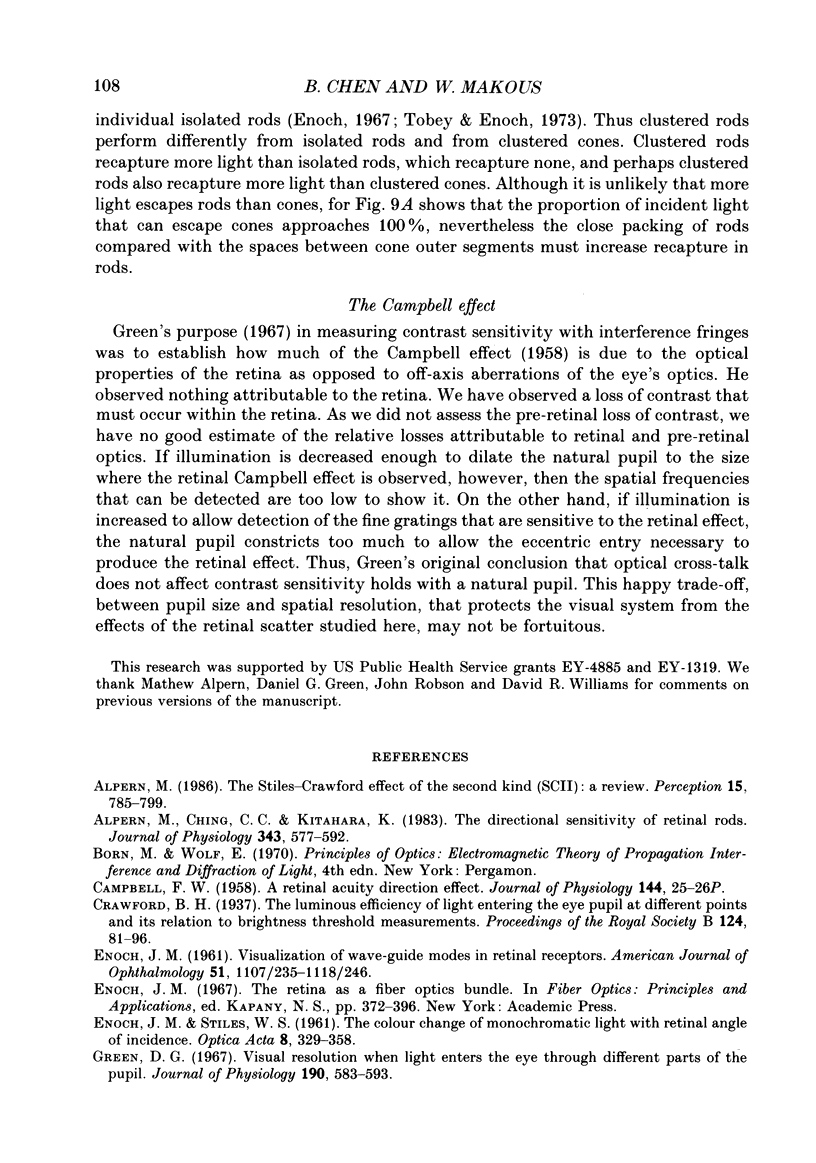
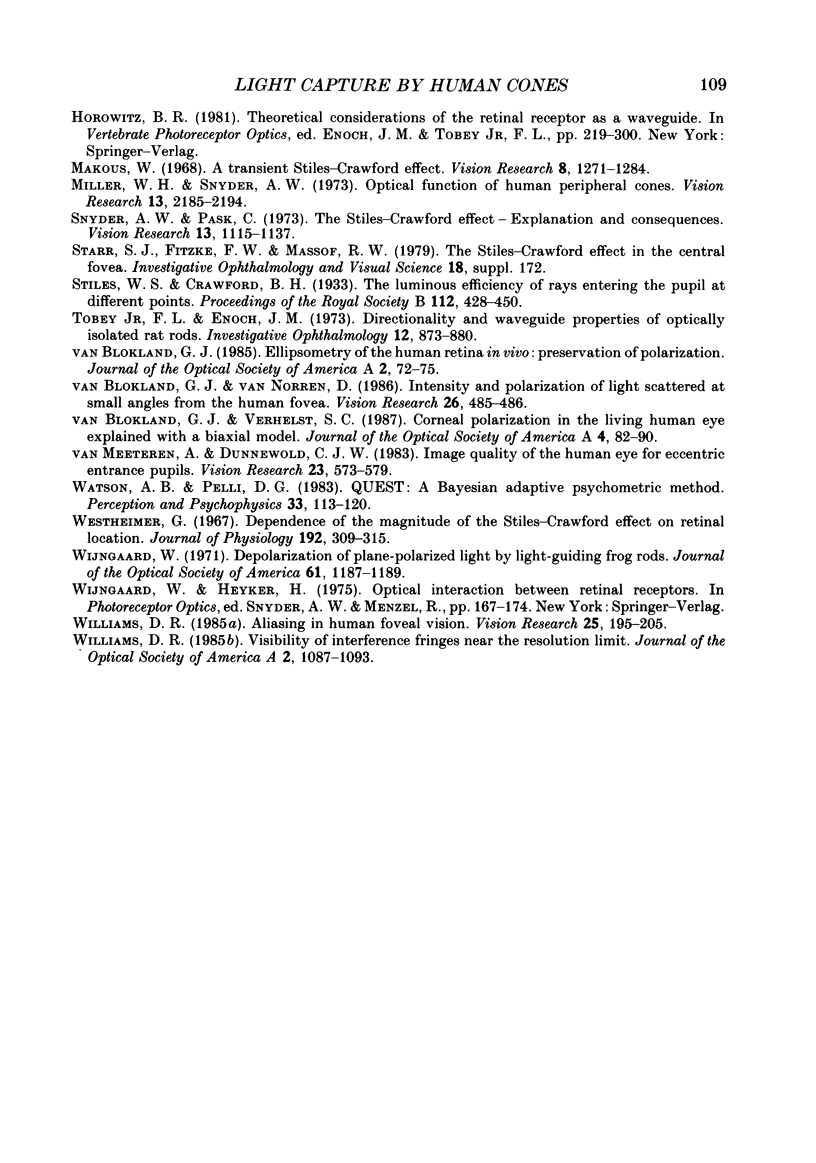
Selected References
These references are in PubMed. This may not be the complete list of references from this article.
- Alpern M., Ching C. C., Kitahara K. The directional sensitivity of retinal rods. J Physiol. 1983 Oct;343:577–592. doi: 10.1113/jphysiol.1983.sp014911. [DOI] [PMC free article] [PubMed] [Google Scholar]
- Alpern M. The Stiles-Crawford effect of the second kind (SCII): a review. Perception. 1986;15(6):785–799. doi: 10.1068/p150785. [DOI] [PubMed] [Google Scholar]
- ENOCH J. M., STILES W. S. The colour change of monochromatic light with retinal angle of incidence. Optom Wkly. 1961 Oct;8(52):329–358. doi: 10.1080/713826396. [DOI] [PubMed] [Google Scholar]
- ENOCH J. M. Visualization of wave-guide modes in retinal receptors. Am J Ophthalmol. 1961 May;51:1107–1118. doi: 10.1016/0002-9394(61)91800-1. [DOI] [PubMed] [Google Scholar]
- Green D. G. Visual resolution when light enters the eye through different parts of the pupil. J Physiol. 1967 Jun;190(3):583–593. doi: 10.1113/jphysiol.1967.sp008229. [DOI] [PMC free article] [PubMed] [Google Scholar]
- Makous W. L. A transient Stiles-Crawford effect. Vision Res. 1968 Oct;8(10):1271–1284. doi: 10.1016/0042-6989(68)90049-7. [DOI] [PubMed] [Google Scholar]
- Miller W. H., Snyder A. W. Optical function of human peripheral cones. Vision Res. 1973 Dec;13(12):2185–2194. doi: 10.1016/0042-6989(73)90221-6. [DOI] [PubMed] [Google Scholar]
- Snyder A. W., Pask C. The Stiles-Crawford effect--explanation and consequences. Vision Res. 1973 Jun;13(6):1115–1137. doi: 10.1016/0042-6989(73)90148-x. [DOI] [PubMed] [Google Scholar]
- Tobey F. L., Jr, Enoch J. M. Directionality and waveguide properties of optically isolated rat rods. Invest Ophthalmol. 1973 Dec;12(12):873–880. [PubMed] [Google Scholar]
- Van Blokland G. J., Verhelst S. C. Corneal polarization in the living human eye explained with a biaxial model. J Opt Soc Am A. 1987 Jan;4(1):82–90. doi: 10.1364/josaa.4.000082. [DOI] [PubMed] [Google Scholar]
- Watson A. B., Pelli D. G. QUEST: a Bayesian adaptive psychometric method. Percept Psychophys. 1983 Feb;33(2):113–120. doi: 10.3758/bf03202828. [DOI] [PubMed] [Google Scholar]
- Westheimer G. Dependence of the magnitude of the Stiles-Crawford effect on retinal location. J Physiol. 1967 Sep;192(2):309–315. doi: 10.1113/jphysiol.1967.sp008301. [DOI] [PMC free article] [PubMed] [Google Scholar]
- Wijngaard W. Depolarization of plane-polarized light by light-guiding frog rods. J Opt Soc Am. 1971 Sep;61(9):1187–1189. doi: 10.1364/josa.61.001187. [DOI] [PubMed] [Google Scholar]
- Williams D. R. Aliasing in human foveal vision. Vision Res. 1985;25(2):195–205. doi: 10.1016/0042-6989(85)90113-0. [DOI] [PubMed] [Google Scholar]
- Williams D. R. Visibility of interference fringes near the resolution limit. J Opt Soc Am A. 1985 Jul;2(7):1087–1093. doi: 10.1364/josaa.2.001087. [DOI] [PubMed] [Google Scholar]
- van Blokland G. J. Ellipsometry of the human retina in vivo: preservation of polarization. J Opt Soc Am A. 1985 Jan;2(1):72–75. doi: 10.1364/josaa.2.000072. [DOI] [PubMed] [Google Scholar]
- van Blokland G. J., van Norren D. Intensity and polarization of light scattered at small angles from the human fovea. Vision Res. 1986;26(3):485–494. doi: 10.1016/0042-6989(86)90191-4. [DOI] [PubMed] [Google Scholar]
- van Meeteren A., Dunnewold C. J. Image quality of the human eye for eccentric entrance pupils. Vision Res. 1983;23(5):573–579. doi: 10.1016/0042-6989(83)90133-5. [DOI] [PubMed] [Google Scholar]


